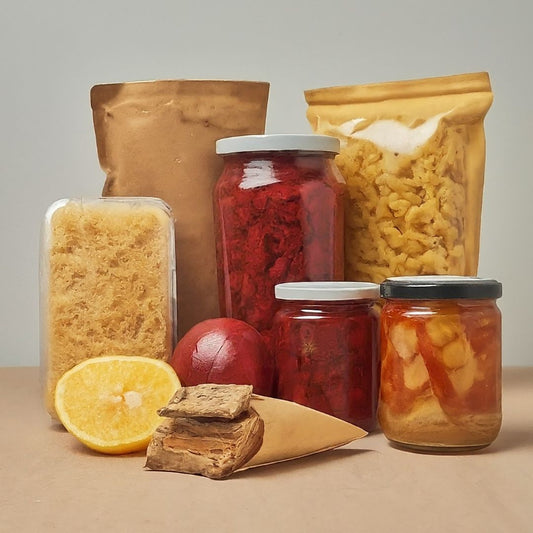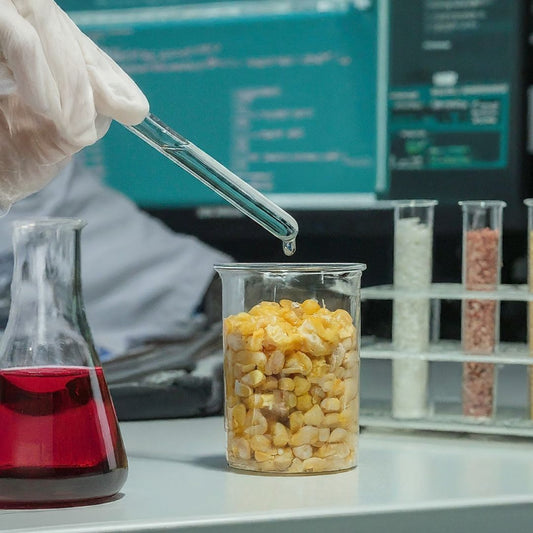Natural Cocoa Vs Dutch Cocoa Powder: What's The Distinction?
Share
It can be very fulfilling and very rich (in more ways than one) when you're baking with chocolate. However your chocolate cake, cookies, or truffles come out, they should taste rich and extremely sweet. That said, even though all chocolate comes from the same kind of cacao beans, there's a lot of variation in chocolate. Case in point: the cocoa powder you bought at the grocery store may not be exactly what your recipe requires. Does the recipe specify "natural" or "Dutch?"
Beyond the different process by which natural and Dutch cocoa powder are made (which we'll get into), there are two major ways to tell them apart: color and acidity. Natural cocoa powder, which is typically easier to find on store shelves, is pale brown in color and rather acidic in taste. On the other hand, Dutch cocoa powder is a deeper, reddish brown and it's been treated in a special way which reduces its acidity and gives it a more neutral, smooth taste. In many cases, the difference is noticeable but still minor enough that you can substitute them without any trouble. However, there are certain recipes where that difference in acidity could cause problems.
Dutch cocoa powder is less acidic
It might be helpful to quickly explain how cocoa powder is made in the first place. When cacao beans are harvested, they're fermented and broken down into cacao nibs; these nibs are separated out into cocoa butter (the fats) and cocoa powder (the solids). Both ingredients are used in most kinds of chocolate, although white chocolate includes only the cocoa butter, which is why white chocolate isn't "real" chocolate.
Sometimes, during this process, the manufacturer chooses to wash the cocoa powder in an alkaline solution — this is the Dutch method, named after the home country of Coenraad Johannes Van Houten, the chemist who invented the method in 1828 (creating modern hot chocolate as we know it). The alkali is usually a basic compound like potassium carbonate or sodium hydroxide, which are similar to baking soda but much more corrosive. This raises the cocoa's pH level from around a mildly acidic 5 to a more neutral 7, which is exactly in the middle of the acidic-basic pH scale. Why go through all this trouble? Dutch cocoa powder tastes more mellow, which chefs and bakers often prefer because it doesn't overpower the other flavors so easily.
Substituting natural and Dutch cocoa
Most chocolate recipes that mention "cocoa powder" or "unsweetened cocoa powder" will work with either the natural or Dutch versions, and it's your decision whether you want a stronger, natural taste or a more mellow taste. The exception involves a little more baking science: any recipe which uses baking soda requires natural cocoa powder, and any recipe which uses baking powder requires Dutch cocoa powder. Baking soda is a base and it needs acidic ingredients to activate it, meaning only natural cocoa powder works. On the other hand, baking powder includes both acids and bases, and neutral Dutch powder works better.
Different chocolate brands vary in regard to natural versus Dutch powder. The main cocoa powder sold by Ghirardelli is natural, and it specifically advertises its ability to add rich and intense flavors to whatever you bake with it. Hershey's sells both a natural unsweetened powder and a "special dark" powder which is a blend of natural and Dutch. Dutch-process cocoa powder is often used in hot chocolate mixes which are often rich in texture but softer in taste, while an extra decadent chocolate fudge cake might benefit from natural powder. Just check the recipe for baking powder.
Beyond the different process by which natural and Dutch cocoa powder are made (which we'll get into), there are two major ways to tell them apart: color and acidity. Natural cocoa powder, which is typically easier to find on store shelves, is pale brown in color and rather acidic in taste. On the other hand, Dutch cocoa powder is a deeper, reddish brown and it's been treated in a special way which reduces its acidity and gives it a more neutral, smooth taste. In many cases, the difference is noticeable but still minor enough that you can substitute them without any trouble. However, there are certain recipes where that difference in acidity could cause problems.
Dutch cocoa powder is less acidic
It might be helpful to quickly explain how cocoa powder is made in the first place. When cacao beans are harvested, they're fermented and broken down into cacao nibs; these nibs are separated out into cocoa butter (the fats) and cocoa powder (the solids). Both ingredients are used in most kinds of chocolate, although white chocolate includes only the cocoa butter, which is why white chocolate isn't "real" chocolate.
Sometimes, during this process, the manufacturer chooses to wash the cocoa powder in an alkaline solution — this is the Dutch method, named after the home country of Coenraad Johannes Van Houten, the chemist who invented the method in 1828 (creating modern hot chocolate as we know it). The alkali is usually a basic compound like potassium carbonate or sodium hydroxide, which are similar to baking soda but much more corrosive. This raises the cocoa's pH level from around a mildly acidic 5 to a more neutral 7, which is exactly in the middle of the acidic-basic pH scale. Why go through all this trouble? Dutch cocoa powder tastes more mellow, which chefs and bakers often prefer because it doesn't overpower the other flavors so easily.
Substituting natural and Dutch cocoa
Most chocolate recipes that mention "cocoa powder" or "unsweetened cocoa powder" will work with either the natural or Dutch versions, and it's your decision whether you want a stronger, natural taste or a more mellow taste. The exception involves a little more baking science: any recipe which uses baking soda requires natural cocoa powder, and any recipe which uses baking powder requires Dutch cocoa powder. Baking soda is a base and it needs acidic ingredients to activate it, meaning only natural cocoa powder works. On the other hand, baking powder includes both acids and bases, and neutral Dutch powder works better.
Different chocolate brands vary in regard to natural versus Dutch powder. The main cocoa powder sold by Ghirardelli is natural, and it specifically advertises its ability to add rich and intense flavors to whatever you bake with it. Hershey's sells both a natural unsweetened powder and a "special dark" powder which is a blend of natural and Dutch. Dutch-process cocoa powder is often used in hot chocolate mixes which are often rich in texture but softer in taste, while an extra decadent chocolate fudge cake might benefit from natural powder. Just check the recipe for baking powder.





